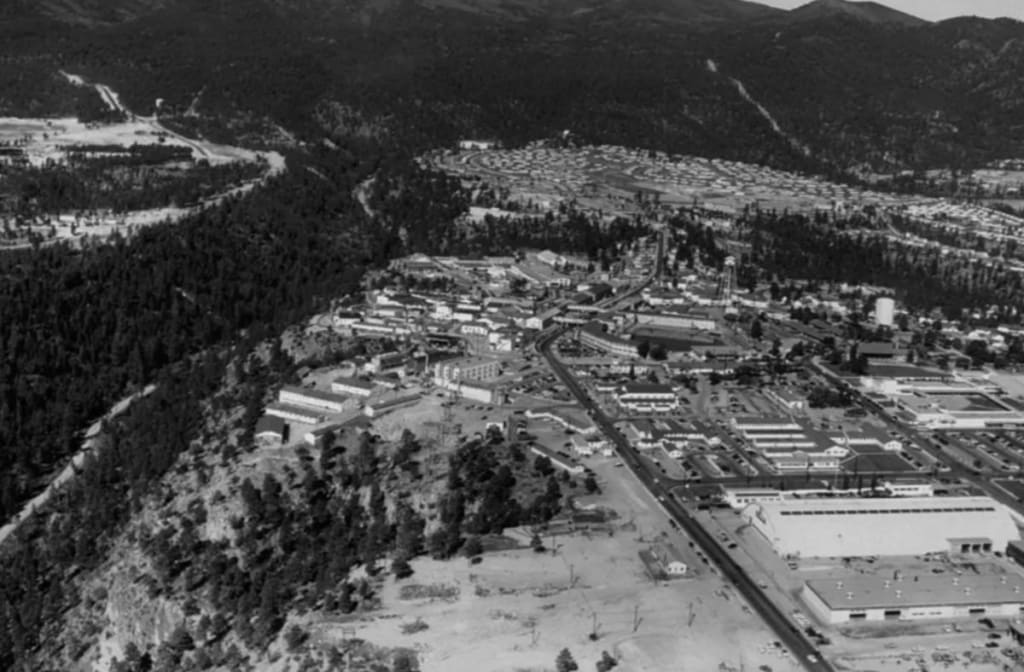The Paradox of Progress: J. Robert Oppenheimer and the Manhattan Project
A Tale of Scientific Triumph and Moral Struggle at the Dawn of the Atomic Age

In the heart of the New Mexico desert, encased within the stern walls of a secret laboratory, a group of brilliant minds were gathered. They were the architects of what would come to be known as the Manhattan Project, and at the helm was J. Robert Oppenheimer, a man as enigmatic as the project he led.
Oppenheimer was an unusual figure; a theoretical physicist who could often be seen wearing a pig hat and was known to dabble in Sanskrit in his spare time. Yet, his eccentricities did nothing to undermine his leadership. In fact, they only added to his charisma.
The purpose of their covert meetings was nothing less than the creation of the world's most deadly weapon - the atomic bomb. They were racing against time, against the tide of World War II that threatened to engulf the world. Oppenheimer, with his pig hat perched jauntily on his head, led them with unwavering determination.
But this story is not about the bomb. It is about the man behind it. A man of dichotomies - a scientist who loved poetry, a leader who wore a pig hat, a creator of weapons who yearned for peace.
In the privacy of his office, Oppenheimer would often find himself lost in thought, the words of the Bhagavad Gita, a 700-verse Hindu scripture written in Sanskrit, echoing in his mind. "We are kept from our goal not by obstacles, but by a clear path to a lesser goal," he would whisper to himself. A lesser goal, he pondered, like using his knowledge of physics to create a weapon of mass destruction?
Oppenheimer's struggle was a personal one. He was torn between his duty as a scientist and his moral compass as a human being. He saw the potential devastation that the atomic bomb could cause, but he also saw its potential to end the war.
The day of the first atomic bomb test arrived. Oppenheimer, his pig hat replaced with a more appropriate helmet, watched from a safe distance as the bomb, named "Trinity", was detonated. As the blinding light filled the sky, a verse from the Bhagavad Gita flashed through his mind: "Now I am become Death, the destroyer of worlds."
In that moment, Oppenheimer realized the magnitude of what they had done. They had harnessed the power of the universe to create a weapon of untold destruction. Yet, in the face of such horror, he also found a strange sense of peace. He had fulfilled his duty as a scientist, but he vowed then and there to dedicate the rest of his life to ensuring the responsible use of this power.
The story of J. Robert Oppenheimer serves as a stark reminder of the dual nature of scientific discovery - it can both create and destroy. But it is also a story of personal struggle and moral responsibility. It's the story of a man in a pig hat, who could quote Sanskrit, standing at the precipice of a new world.
And so, Oppenheimer, the enigmatic leader of the Manhattan Project, became a symbol of both the power and the peril of scientific progress. He was a testament to the fact that science, in the hands of humanity, holds the potential for both great good and great destruction.
In the end, the story of J. Robert Oppenheimer is a story of humanity itself - complex, contradictory, capable of both profound beauty and profound destruction. It's a story that serves as a poignant reminder of the responsibilities that come with knowledge and power. And it's a story that, despite its historical context, continues to resonate in our world today.





Comments
There are no comments for this story
Be the first to respond and start the conversation.